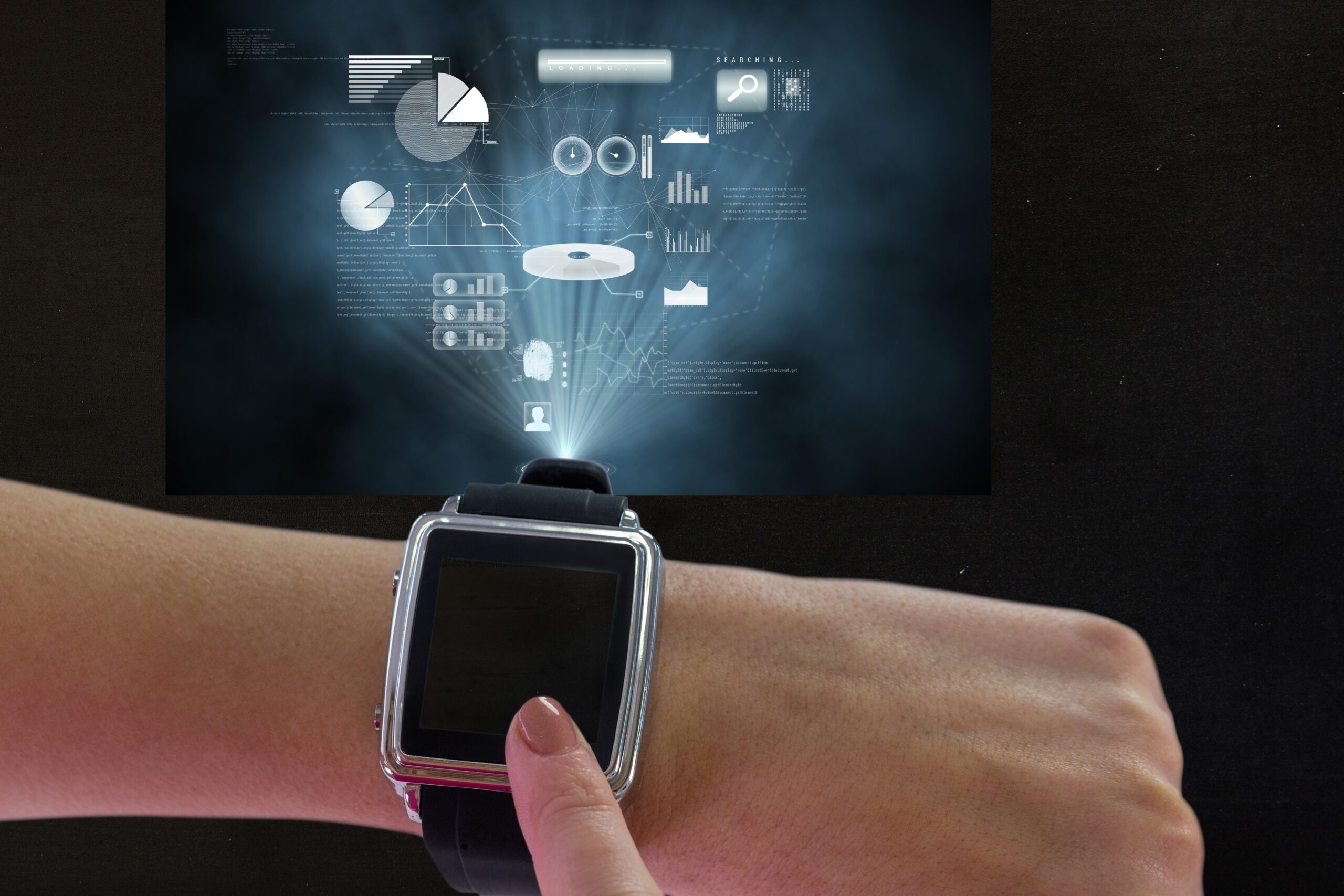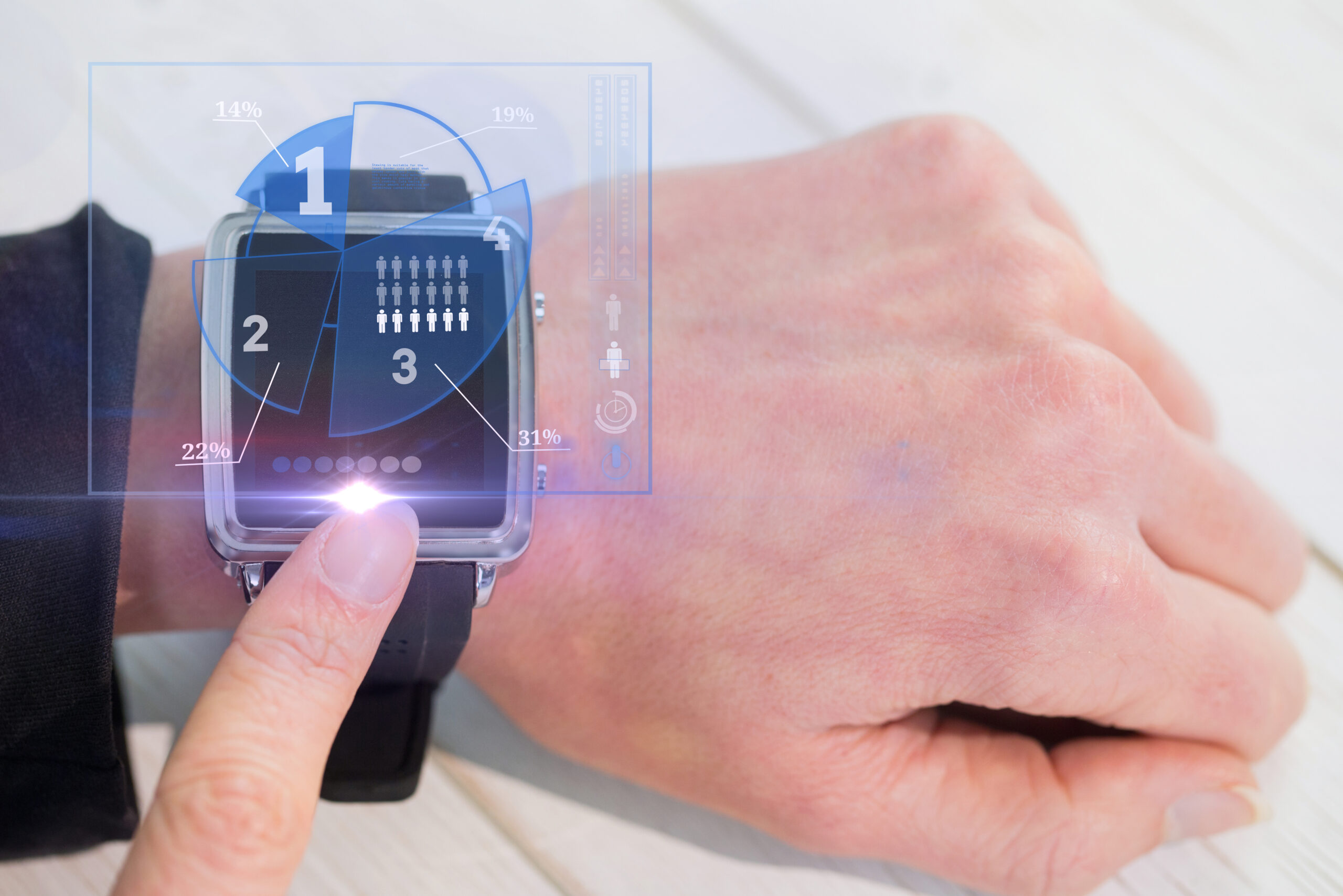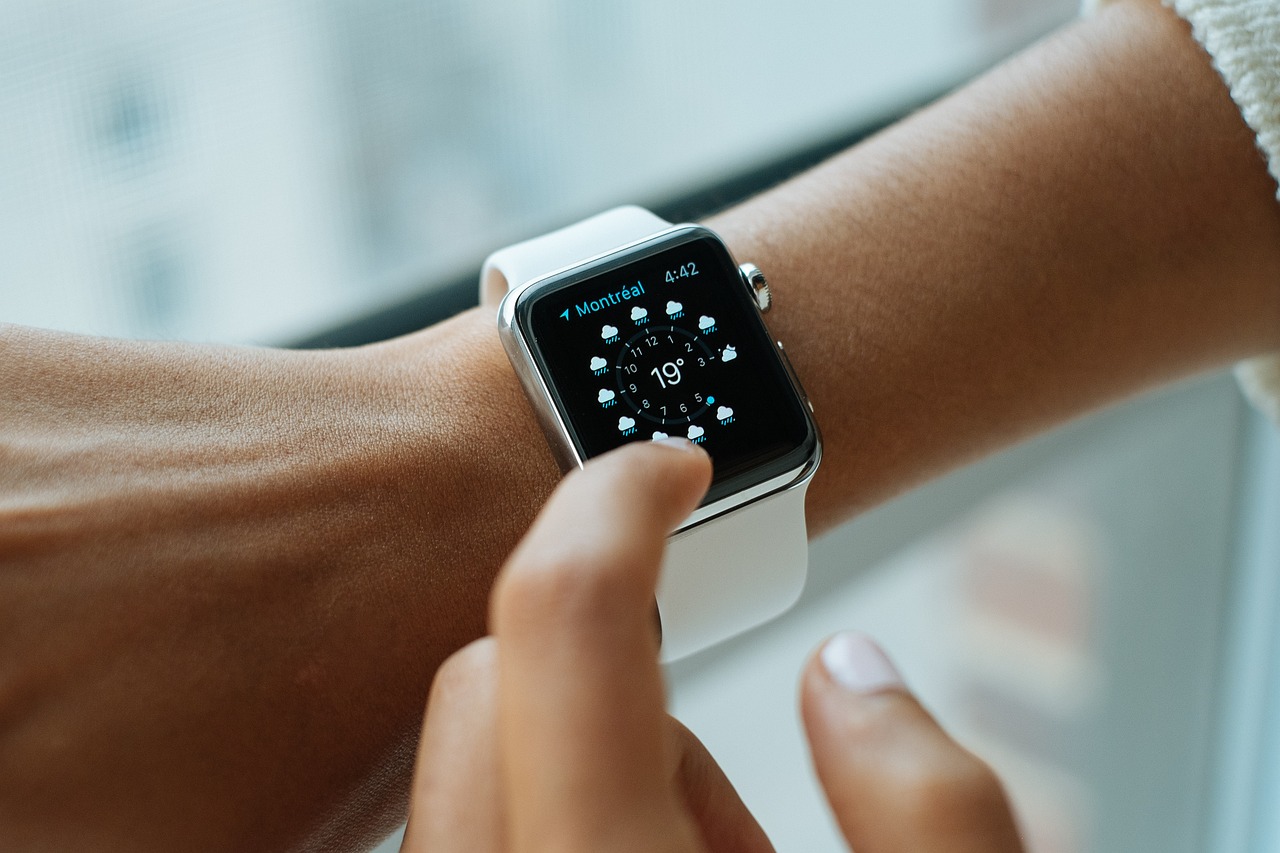In today’s fast paced world, where convenience meets innovation, smartwatch battery life technology has become a game changer. As we rely more on these wearable devices to track our fitness, manage notifications, and even make calls, one key feature stands out: battery life.
With advancements in smartwatch battery life technology, manufacturers are pushing the boundaries to create longer lasting, more efficient batteries, ensuring users can rely on their smartwatches all day without frequent charging. Let’s explore how these innovations are shaping the future of wearable tech and what you can expect from the latest smartwatches.
Smartwatch Battery Life Technology: Revolutionizing Wearable Devices
Smartwatch battery life technology has drastically evolved, addressing one of the most significant concerns of smartwatch users: battery longevity. Innovations in battery technology now allow users to enjoy their devices for extended periods without needing constant charging.
From energy efficient displays to optimized processors, advancements in smartwatch battery life technology are transforming the wearable tech industry. These improvements ensure your smartwatch stays powered up longer, enhancing its overall usability and performance. Let’s dive deeper into how this technology works and the benefits it brings.
Energy Efficient Displays: A Key Innovation
One of the major breakthroughs in smartwatch battery life technology is the development of energy efficient displays. OLED and AMOLED screens, for example, consume less power while maintaining vibrant visuals, leading to a significant reduction in battery drain.
With these displays, smartwatches can last longer on a single charge, even with continuous use. As manufacturers incorporate low power displays, users can rely on their devices throughout the day, from morning workouts to late night social media browsing, without worrying about running out of battery.
Advanced Processors for Power Optimization
Another area where smartwatch battery life technology has made leaps is with the development of specialized processors. These chips are designed to consume minimal power while still delivering high performance.
They help manage background tasks and processes efficiently, ensuring that your smartwatch can handle everything from fitness tracking to real time notifications without draining the battery. By improving the energy efficiency of processors, tech companies are pushing the limits of how long smartwatches can function on a single charge.
Battery Management Software: A Game Changer
Battery management software is becoming a crucial component in optimizing smartwatch battery life technology. This software helps smartwatches learn user behavior and adjust power consumption accordingly. For instance, it can automatically dim the screen or limit background apps when the battery is running low.
Some advanced systems also allow users to monitor battery health and make adjustments in real time to prolong the device’s lifespan. These innovations give users more control over their smartwatch’s battery performance, ensuring it lasts longer with every use.
Charging Speed and Wireless Charging Advancements
While improving battery longevity is vital, smartwatch battery life technology also focuses on reducing charging times. Fast charging technology is now commonplace in many smartwatches, allowing users to recharge their devices in a matter of minutes.
Additionally, wireless charging is becoming more efficient, with many smartwatches supporting Qi wireless charging. This eliminates the need for tangled cables and makes charging more convenient than ever before. These enhancements ensure that users can spend more time wearing their smartwatch and less time waiting for it to recharge.
The Future of Smartwatch Battery Life Technology
As technology continues to advance, the future of smartwatch battery life technology looks brighter than ever. With the development of solid state batteries, energy harvesting systems, and better integration of AI for power management, we can expect even more impressive battery performances in the coming years.
These innovations will not only increase battery life but also improve overall user experience by making wearables smarter, more reliable, and more efficient. The possibilities for smartwatch battery life technology are limitless, and we’re just getting started.
The Evolution of Smartwatch Battery Life Technology
Smartwatch battery life technology has come a long way since the early days of wearables. Initially, users struggled with short battery life, leading to frequent recharges.
The limited power storage in early models meant that users often had to plug in their devices every day or even more frequently. These early issues highlighted the need for more efficient battery technology in the growing smartwatch market.
Early Smartwatch Battery Issues and Limitations
Early smartwatches faced significant battery life challenges. With limited battery capacity and high power consumption from multiple features, such as GPS tracking, heart rate monitoring, and vibrant displays, users could barely make it through a full day without a charge. Manufacturers had to compromise between adding features and ensuring the device lasted long enough to be practical for everyday use.
Initial Innovations to Enhance Battery Life
To address these challenges, innovators started developing more energy efficient components. Low power processors, OLED screens, and battery management systems were introduced, allowing devices to conserve energy. These advancements marked a major turning point, as smartwatch battery life technology began to improve, offering users the ability to use their devices longer between charges.
How Smartwatch Battery Life Technology Has Progressed Over Time
Today, smartwatch battery life technology has progressed significantly. With the introduction of lithium polymer batteries and more efficient power management software, smartwatches now offer longer battery life, with some models lasting up to several days on a single charge.
Wireless charging and solar powered options have also made an appearance, further boosting convenience and reducing dependency on traditional charging methods. The continual miniaturization of components has also allowed for slimmer designs without compromising on battery performance.
Stay Updated with Evolving Technology Trends
As technology continues to evolve, smartwatch battery life is expected to improve even further. Manufacturers are constantly seeking innovative solutions, such as the integration of graphene batteries or other new materials, to boost efficiency and extend battery life.
For users, staying updated with these trends ensures they get the most out of their devices while benefiting from the latest advancements in smartwatch battery life technology.
Key Factors Affecting Smartwatch Battery Life
Display Technology and Its Impact on Battery Life
Smartwatch battery life technology heavily depends on display types. OLED, LCD, and AMOLED screens consume different power levels. OLED displays are energy efficient as they light individual pixels.
AMOLED screens also conserve power by lighting pixels selectively. In contrast, LCD screens require backlighting, increasing power consumption. Choosing an energy efficient display enhances smartwatch battery performance.
Power Consumption of Different Screen Types
Screen type significantly impacts smartwatch battery life. OLED screens excel in saving power by turning off black pixels. AMOLED displays offer similar benefits with vibrant colors and deep contrasts. LCD screens consume more power as their backlight remains active. For better battery performance, OLED and AMOLED displays are ideal options.
Processor Power Efficiency
A smartwatch’s processor directly influences its battery life. Custom designed chips like Qualcomm Snapdragon Wear or Apple’s custom processors optimize power usage. Energy efficient processors reduce heat and extend battery life. Selecting a smartwatch with a power efficient processor improves performance and longevity.
Role of Custom Designed Chips and Energy Efficient Processors
Smartwatch battery life technology benefits from custom processors designed for wearable devices. These chips balance performance and power consumption. Brands like Apple, Samsung, and Qualcomm develop processors tailored for efficient energy management. Choosing smartwatches with optimized processors enhances battery efficiency.
Software and Battery Management
Optimized software greatly improves smartwatch battery life. Operating systems like Wear OS, watchOS, and Tizen implement smart power saving features. AI driven power management adjusts settings based on usage patterns. Efficient software ensures longer battery life with minimal performance compromise.
Smart Power Saving Modes and AI Driven Power Management
Modern smartwatches utilize AI technology for intelligent power management. Adaptive battery settings adjust brightness, notifications, and background apps. Power saving modes disable non essential features, conserving battery during critical periods. Enabling these modes effectively extends smartwatch battery life.
Wireless Connectivity and Battery Drain
Wireless features like Bluetooth, Wi-Fi, and GPS significantly affect smartwatch battery life. Bluetooth connections consume less energy, making them ideal for daily use. GPS tracking and constant Wi-Fi connections drain batteries faster. To extend battery life, disable GPS and Wi-Fi when not needed. Managing connectivity settings effectively conserves power.
Recent Innovations in Smartwatch Battery Life Technology
Smartwatch battery life technology has seen remarkable improvements in recent years. Manufacturers are now integrating advanced features to enhance battery performance and user experience.
Advanced Display Technology for Longer Battery Life
Modern smartwatches use energy efficient display panels such as AMOLED and OLED. These screens consume less power by turning off individual pixels when displaying black backgrounds. Always on display modes are now optimized to reduce battery drain.
Introduction of Low Power Processors
New smartwatches are equipped with low power processors designed for optimal energy consumption. These advanced chipsets improve performance without rapidly depleting battery power. Brands are investing in efficient architectures to extend smartwatch usage times.
Energy Efficient Sensors and Tracking Systems
Fitness trackers and heart rate monitors now feature energy saving sensors. These sensors consume minimal power while continuously tracking vital data. Improved algorithms also ensure data accuracy with less energy use.
Use of Solar Charging and Energy Harvesting
Solar charging technology is now emerging in smartwatch battery life technology. Some models incorporate solar panels that convert sunlight into usable power. Energy harvesting techniques also capture environmental energy, extending battery life naturally.
Fast Charging Capabilities and Wireless Charging
Recent smartwatches support fast charging features that power devices in minutes. Wireless charging pads offer a convenient solution, eliminating the need for traditional cables. These innovations improve usability and reduce downtime.
Integration of Battery Management Software and AI
Advanced battery management systems and AI algorithms play a key role in conserving energy. These systems analyze usage patterns, adjust background processes, and optimize battery life automatically. Users benefit from smarter power control without manual adjustments.
The Importance of Smartwatch Battery Life Technology
Smartwatch battery life technology has revolutionized how users interact with their devices. Longer battery life ensures extended usage without constant charging, enhancing overall convenience.
Key Benefits of Improved Battery Life
- Enhanced Fitness Tracking and Health Monitoring
Long lasting battery power allows continuous heart rate tracking, step counting, and sleep analysis without frequent recharges. - Reliable Daily Task Management
Users can manage reminders, notifications, and schedules seamlessly throughout the day. - Improved User Satisfaction
Extended battery life reduces frustration caused by frequent charging, improving overall experience.
The Convenience of Fast and Wireless Charging
Fast charging technology ensures users can quickly recharge their devices, reducing downtime. Wireless charging further adds ease by eliminating cable clutter.
How Longer Battery Life Enhances Smartwatch Utility
With extended battery life, smartwatches become ideal for outdoor activities, travel, and busy schedules. Users enjoy uninterrupted connectivity, reliable performance, and improved functionality.
Challenges in Improving Smartwatch Battery Life Technology
Balancing Power Consumption with Performance
Smartwatches require powerful processors, sensors, and connectivity features. However, these functions often consume significant energy. Balancing performance with efficient power usage remains a major challenge in enhancing smartwatch battery life technology.
Physical Size Constraints of Smartwatches
The compact design of smartwatches limits battery size. Manufacturers must develop smaller yet powerful batteries to improve battery performance without increasing the device’s size.
Demand for High Performance Features
Users expect advanced features like GPS tracking, fitness monitoring, and Bluetooth connectivity. These functions consume more power, making it difficult to maintain long battery life.
Battery Degradation Over Time
As batteries age, their capacity decreases, reducing performance. This degradation directly affects user experience, requiring innovative solutions to prolong battery health.
Cost Implications of Advanced Battery Technologies
Implementing cutting edge battery materials and energy efficient hardware often increases production costs. Manufacturers must balance affordability with improved battery performance.
Tips to Improve Smartwatch Battery Life Technology
- Use energy efficient components and processors.
- Optimize software to minimize background activity.
- Enable power saving modes for longer battery performance.
- Reduce screen brightness and disable unused features.
The Future of Smartwatch Battery Life Technology
Smartwatch battery life technology is evolving rapidly with new advancements to improve performance. Emerging technologies are paving the way for longer lasting batteries. Innovations in solid state batteries offer higher energy density and improved safety, enhancing smartwatch battery performance.
Emerging Technologies for Better Battery Performance
Artificial intelligence (AI) and machine learning (ML) play a key role in managing battery consumption efficiently. These technologies analyze usage patterns and optimize power distribution, extending battery life. With smarter battery management, users can expect smartwatches to last 2 days, 3 days, or even a week on a single charge.
Potential Developments in Solid State Batteries
The integration of sustainable and renewable energy sources is also being explored to improve smartwatch battery life technology. Solar powered smartwatches, kinetic energy charging, and energy efficient components are potential solutions for eco-friendly power management.
Role of AI and Machine Learning in Battery Management
In the future, smartwatch battery life technology advancements will provide users with enhanced performance, longer lasting power, and sustainable charging options. As wearable technology evolves, improved battery innovations will offer seamless usage for fitness tracking, notifications, and other essential features without frequent charging.
Predictions for 2 day, 3 day, or Even Week Long Battery Life
Consumers seeking better smartwatch battery life technology can look forward to devices that combine efficient battery management, innovative materials, and eco-friendly solutions for a superior user experience.
FAQs:
Q1.What is smartwatch battery life technology?
Smartwatch battery life technology refers to the innovations and advancements in the design and functionality of smartwatch batteries.
It includes improvements in battery chemistry, energy efficient components, and software optimizations that allow smartwatches to run for longer periods on a single charge. This technology ensures users can enjoy extended use without worrying about frequent charging.
Q2.How does smartwatch battery life technology improve performance?
Smartwatch battery life technology enhances performance by integrating energy efficient processors, optimized operating systems, and low power displays. These improvements help reduce power consumption while maintaining the watch’s functionality. Additionally, advancements in battery management software ensure that power is used efficiently, extending the device’s lifespan.
Q3.What factors impact the battery life of a smartwatch?
Several factors impact smartwatch battery life technology, including the type of display (AMOLED, OLED, or LCD), the efficiency of the processor, wireless connectivity options like Bluetooth and Wi-Fi, and the use of sensors. Features like GPS tracking, continuous heart rate monitoring, and notifications also consume power, affecting battery longevity.
Q4.Why do some smartwatches last longer than others?
The longevity of a smartwatch depends on the integration of advanced smartwatch battery life technology. Smartwatches with energy efficient components like low power displays, custom processors, and battery management systems tend to last longer. Devices with power saving modes or energy efficient sensors also consume less power, contributing to longer battery life.
Q5.Can I extend the battery life of my smartwatch?
Yes, you can improve the performance of smartwatch battery life technology by adjusting settings such as lowering screen brightness, turning off unnecessary features like GPS or notifications, and using power saving modes. Additionally, some smartwatches offer battery optimization tools that automatically adjust settings based on your usage patterns.
Q6.How fast do smartwatches charge with modern battery life technology?
Thanks to advancements in smartwatch battery life technology, many modern smartwatches now support fast charging. Depending on the model, you can expect up to 50% charge in just 30 minutes, with some devices fully charging in under an hour. Wireless charging options also provide a convenient way to quickly power up your smartwatch.
Q7.Will future smartwatch battery life technology eliminate the need for daily charging?
While smartwatch battery life technology has made significant progress, daily charging is still common for many smartwatches. However, with continuous innovations such as solid state batteries and energy harvesting systems, we may soon see smartwatches that can last several days or even weeks on a single charge, reducing the need for frequent recharging.
Q8.How does battery management software impact smartwatch battery life?
Battery management software plays a crucial role in optimizing smartwatch battery life technology by monitoring usage patterns and adjusting power consumption. These systems can automatically disable non essential features, adjust screen brightness, and limit background apps to preserve battery life, making the device last longer.
Q9.What is the future of smartwatch battery life technology?
The future of smartwatch battery life technology is promising, with ongoing developments in solid state batteries, AI driven battery management, and energy efficient power systems. Innovations like solar charging and improved wireless charging technology will further extend battery life, while sustainable energy solutions could make smartwatches even more efficient.
Q10.Does smartwatch battery life degrade over time?
Yes, like all rechargeable batteries, the battery in your smartwatch will degrade over time. Smartwatch battery life technology has improved to mitigate this effect, but after extensive use, the battery will lose some of its capacity. Regular software updates and proper charging habits can help maximize battery lifespan, but eventually, you may need to replace the battery.
Conclusion:
smartwatch battery life technology has made tremendous strides, transforming the way we use wearable devices. From energy efficient displays and processors to advanced battery management systems, these innovations have significantly extended the time we can rely on our smartwatches without frequent charging.
As technology continues to evolve, we can expect even more breakthroughs that will further enhance battery performance, allowing for longer lasting and more efficient devices. With continued progress in smartwatch battery life technology, the future promises even smarter, more convenient wearables that better meet the needs of users everywhere.




